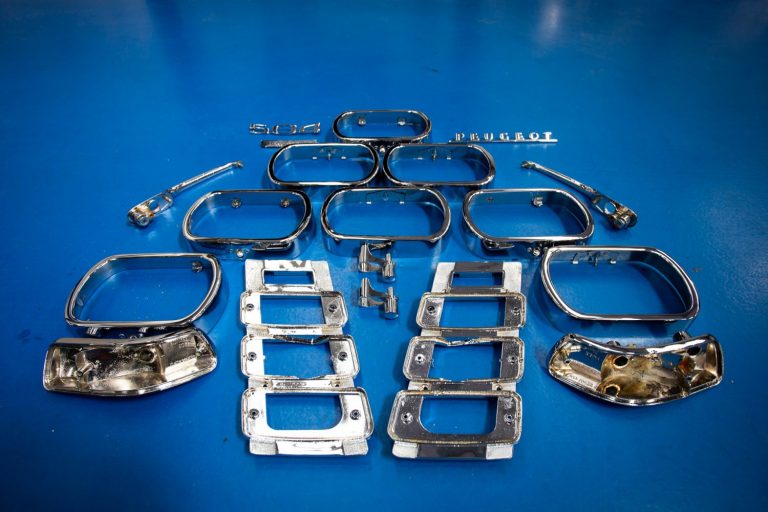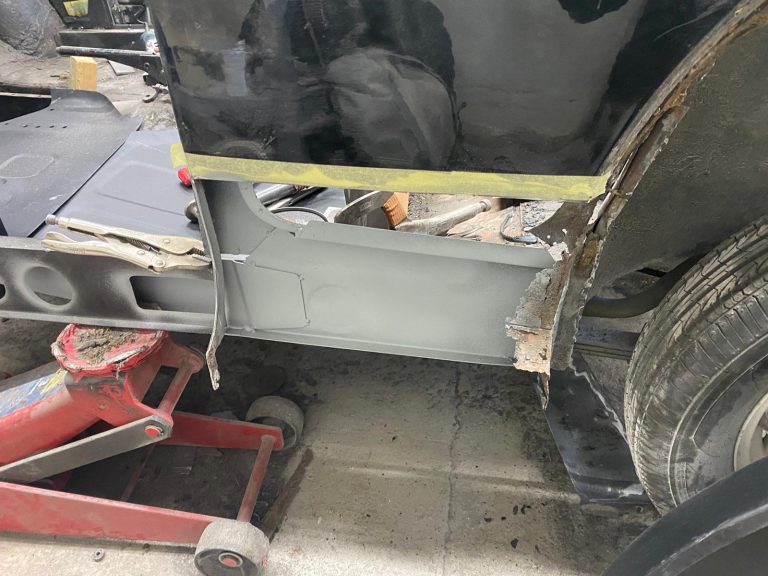
Chromework Completed on several Classic Car Restorations
These chrome items have been completely transformed and are shining bright once more. The first step in the process of re-chroming is the stripping process.


These chrome items have been completely transformed and are shining bright once more. The first step in the process of re-chroming is the stripping process.

It seems like an endless task for Antony at the moment as he continues to work on the body repairs of our 1963 Morris Minor

This gorgeous TR3 has arrived at the Bridge Classic Cars Workshop. It joins another TR3 which is being looked after by Ady in the Engine
These chrome items have been completely transformed and are shining bright once more. The first step in the process of re-chroming is the stripping process. Grease, paint and rust that has accumulated on the car bumper over the years is removed.
Items are then stripped in a solution known as ‘Labere’. This solution is a perfect chemical balance to ensure the old chrome plating is removed without damaging the metal underneath.
The next step in the process is polishing to a smooth finish.
The metal has then gone through a triple plating process. First copper, applied for weather protection. Then Nickel is applied. Once the nickel layer has been applied it is time for the chrome.
The chrome plating process is a method of applying a thin layer of chromium onto a substrate (metal or alloy) through an electroplating procedure.
In simple terms, electroplating is achieved by passing an electric current between two electrodes which are immersed in an electrolyte bath comprising of chromic acid. One of the electrodes will be the substrate which is to be plated. During the flow of electricity between the two electrodes, chromium atoms are deposited in a layer on the electrode to be plated.
We have chromework here for our Peugeot 504, Mini, Triumph TR6, Ford Capri and Corvette projects.
It seems like an endless task for Antony at the moment as he continues to work on the body repairs of our 1963 Morris Minor 1000.
More panels have been cut out and more new panels, whether they be replacement panels or fabricated panels are being fitted.
This gorgeous TR3 has arrived at the Bridge Classic Cars Workshop. It joins another TR3 which is being looked after by Ady in the Engine Shop.
This TR3 is in for a full service, thorough inspection, MOT and new fuel lines. We’ll also be improving the engine running and checking the passengers side seat belt.
Bridge Classic Cars are award winning Classic Car Restoration and Maintenance specialists. Your pride and joy is in safe hands with our expert Classic Car Technicians. Take a look at our awards here.